
Installing trim can give your home a finished, polished appearance. Learn how much it costs to install trim and what factors affect how much you’ll pay.
When considering MDF or wood molding, which takes the crown?


MDF crown molding ranges from $1 to $7 per linear foot, while wood crown molding costs $3 to $30 per linear foot.
Wood is a traditional option to use for crown molding, offering durability and a high-end look.
Using MDF crown molding will save you some money and is a good choice for DIY installations.
Crown molding delivers a stylish trim and hides imperfections where your home’s walls meet the ceiling. You can choose from several materials for crown molding. When comparing MDF versus wood crown molding, it’s tough to go wrong, as both materials work well as trim. However, each material has its own strengths and weaknesses, and your project may be better served with wood over MDF or vice versa.
Although wood crown molding has been the material of choice for several centuries, other materials like MDF are providing excellent alternatives in modern designs. When comparing MDF versus wood crown molding, MDF is less expensive, easier to install for DIYers, and ships with primer already on it. But wood crown molding has a timeless appeal, can be stained or painted, and offers better durability than MDF.
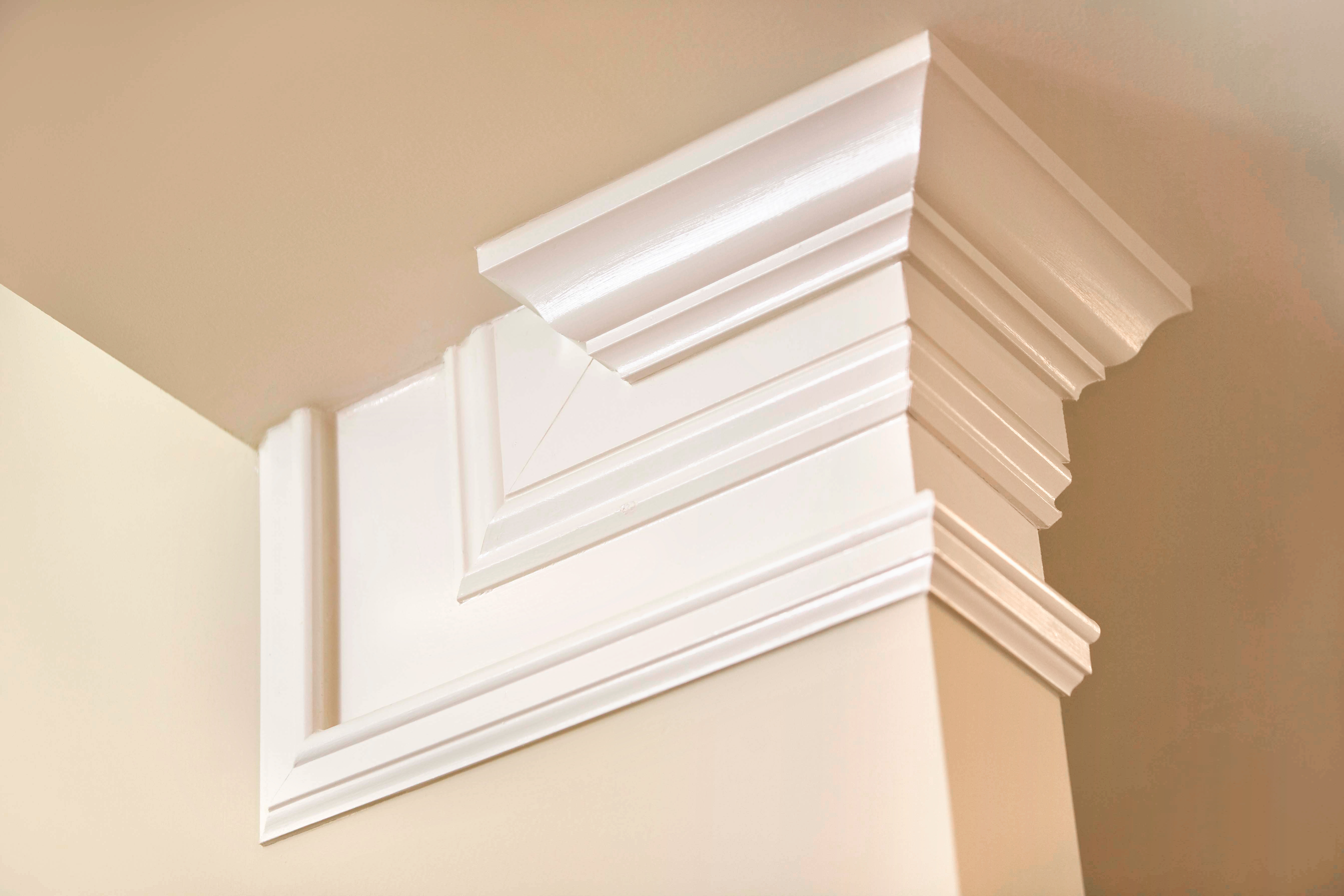
Crown molding that’s made from MDF, which stands for Medium Density Fiberboard, is a composite product. It uses natural wood fibers mixed with resin to create trim that resembles natural wood. MDF never has knots or other imperfections that you may find with natural wood, but it also isn’t as durable, especially when used in areas subject to impacts or high humidity.
| Pros | Cons |
|---|---|
| Reasonable price point | Cannot be stained |
| Works for DIY installations | Impact damage possible |
| Easy to add paint | May warp in high humidity |
Best for:
People who want a cost-effective crown molding material
Those looking to do a DIY installation to save money
Areas that don’t have high humidity exposure
Compared to natural wood crown molding, MDF has a lower price per linear foot. Because of its lightweight design and low cost, handy DIYers can feel comfortable trying to save money by installing MDF molding themselves.
MDF is softer than natural wood, meaning it’s easier to cut and hang in tight spots where it may need a little flexibility.
MDF materials arrive with primer already applied, so you can paint them another color immediately, saving a step. Some people choose to install them with the white primer showing.
If you want your crown molding to resemble natural wood by using stain instead of paint, MDF is not an option. It arrives primed, meaning your only choice is to paint it another color or leave it white.
Using MDF in a bathroom or another room where high humidity is common can be problematic. MDF might swell or warp when exposed to significant moisture. If you do choose to install MDF crown molding in a bathroom, don’t expect it to last as long as other materials.
MDF crown molding is susceptible to chipping and impact marks when placed under stress. If you’re only hanging it at the top of the room where the ceiling and walls meet, though, you probably don’t have to worry about impact issues.
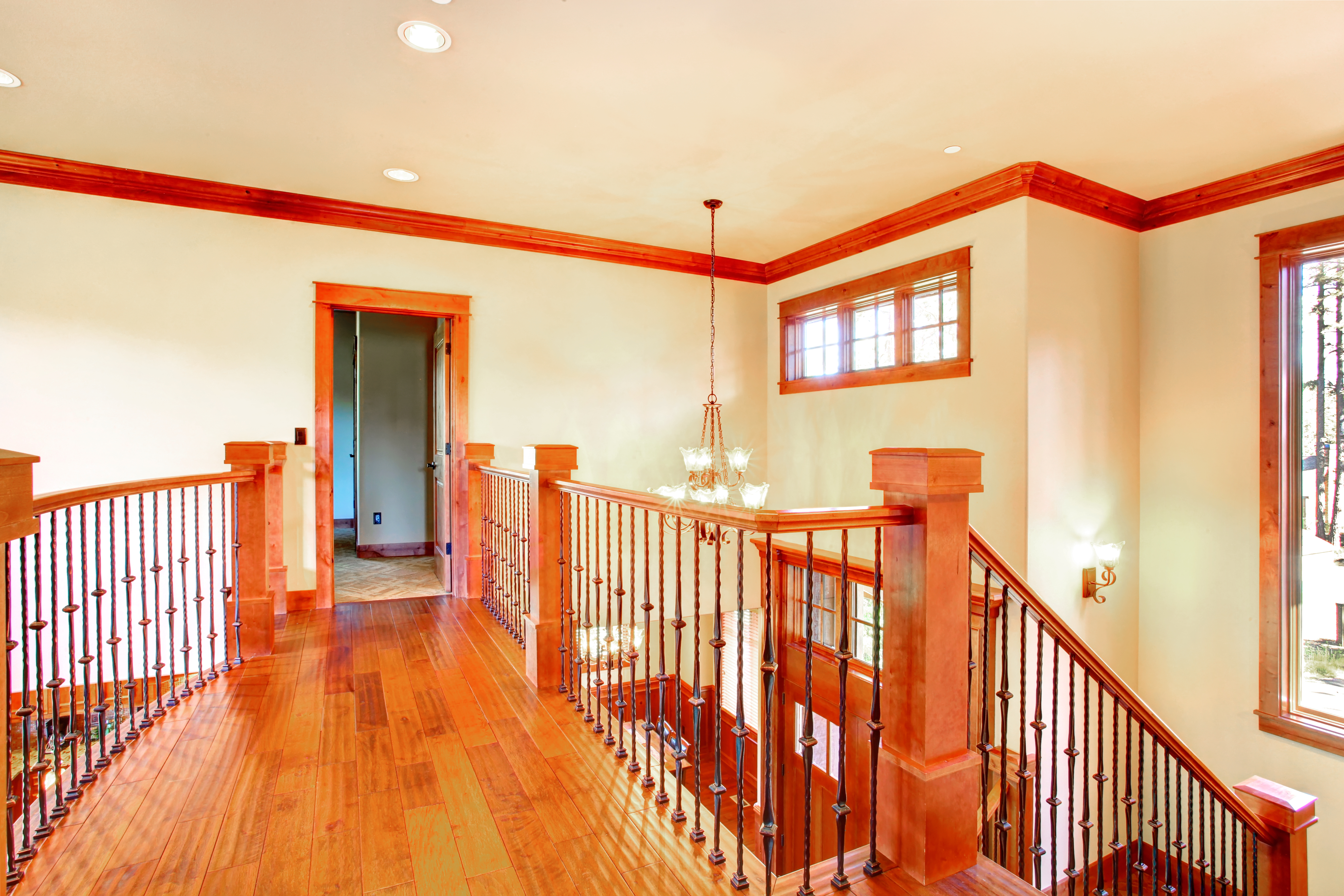
Wood crown molding is decorative trim that consists of materials like oak, pine, or cherry. This is an all-natural crown molding that’s been in use in homes for centuries. Wood always looks great when installed as crown molding, as it has a timeless appeal. Someone considering buying a vintage or high-end luxury home would expect to find crown molding made of wood.
| Pros | Cons |
|---|---|
| Found in high-end homes | Pricier than others |
| Has impact resistance | Tougher to install |
| Traditional crown molding | May need repainting |
Best for:
People who want to install it as baseboards or chair railing, too
Remodeling projects where materials original to the home are expected
Those who plan to hire a professional to install the crown molding
When most people think about installing crown molding, the first material they consider will be wood. Crown molding made from wood has been installed in homes for centuries, and most people restoring a vintage home will want to use this traditional material.
Wood crown molding is highly impact-resistant. Although molding used near the ceiling rarely will be subject to impacts, if you install it as chair railing, its ability to withstand damage will be important.
Buyers considering a high-end home will expect to find wood crown molding installed, as this material creates a luxurious feeling in the house’s design.
The biggest drawback of wood crown molding is its price per linear foot. Some types of crown molding made from oak or mahogany could cost several times more than other materials.
If you choose to paint or stain the wood crown molding, you may have to apply the coating again in several years. If you’re installing wood in a bathroom where humidity is common, you might need to seal the wood every few years. Other materials used for crown molding don’t require much maintenance.
The installation of wood crown molding is more challenging compared to other materials. If you’re using a pricey type of wood in your project, you should hire a local crown molding installation professional to hang it for you. This eliminates the risk of making a DIY error while cutting it that could ruin an expensive piece of wood.
Use the following categories to compare MDF versus wood crown molding to determine which material is better for your project.
Although MDF and wood crown molding may look similar once installed, natural wood delivers a more desirable appearance in most situations.
If you have an older home and you’re trying to create a vintage look, you’d expect to find wood crown molding instead of MDF or another material. If the original style of home had used stained wood as crown molding, you can’t use MDF because it is not stainable.
Adding this trim is not going to significantly increase the value of your house. However, if you have a high-end home you’re trying to sell, buyers will want wood crown molding. It can create a luxurious feel in the home, leading some buyers to attribute more value to the property.
Wood crown molding provides better durability than MDF in most circumstances. If the trim will be in a high-humidity area like a bathroom or near a kitchen stove, MDF might warp or swell. Wood can better resist high humidity, especially if you seal it.
Wood is harder than MDF. If you’re hanging the MDF crown molding in an area where people or furniture may bump into it, the MDF may show damage. Wood resists indents, crushed corners, and gouges better than MDF.
MDF crown molding is a less expensive material, on average, than natural wood. MDF crown molding ranges from $1 to $7 per linear foot, while wood crown molding costs $3 to $30 per linear foot. Not that the costs are nearly identical when comparing some kinds of pine or maple wood molding with MDF. However, if you’re installing exotic wood or oak, the price per linear foot will be significantly more than what’s found with MDF.
The cost to install crown molding if you hire a pro is slightly lower for MDF versus wood crown molding, too. Who installs crown molding? You can hire a local professional who specializes in installing trim and crown molding.
MDF is one of the easiest crown molding materials to install. It weighs less than natural wood and is easier to cut, simplifying things for an inexperienced DIYer. It arrives primed, meaning you can hang it as is or add just one coat of paint.
It also has a little bit of flexibility, which makes it easier to add to a wall or corner that’s not quite straight. Natural wood doesn’t bend as easily.
MDF and wood crown molding both need occasional repainting or touch-ups over a period of several years. Natural wood may need to be sealed every so often to protect against water damage.
Wood crown molding should last several decades when properly maintained. MDF crown molding might last 20 years in ideal conditions. However, if you install it in an area where it may suffer moisture exposure or impacts, it probably won’t last the expected 20 years before needing replacement.
Natural wood is an eco-friendly material because it comes from a renewable resource. When used as crown molding, it lasts a long time, meaning you won’t need replacement materials as often.
Some people consider MDF eco-friendly because it frequently uses fibers sourced from recycled wood. However, manufacturers may use harmful chemicals to create it which some customers will want to avoid. Fortunately, in recent years, MDF manufacturers have removed some of the most dangerous chemicals from the manufacturing process.
From average costs to expert advice, get all the answers you need to get your job done.

Installing trim can give your home a finished, polished appearance. Learn how much it costs to install trim and what factors affect how much you’ll pay.

Find out how much carpenters charge, including average rates, cost factors, and tips to help you budget for your next carpentry project.

Discover the cost to install a stair railing, including average prices, key cost factors, and tips to save on your project.
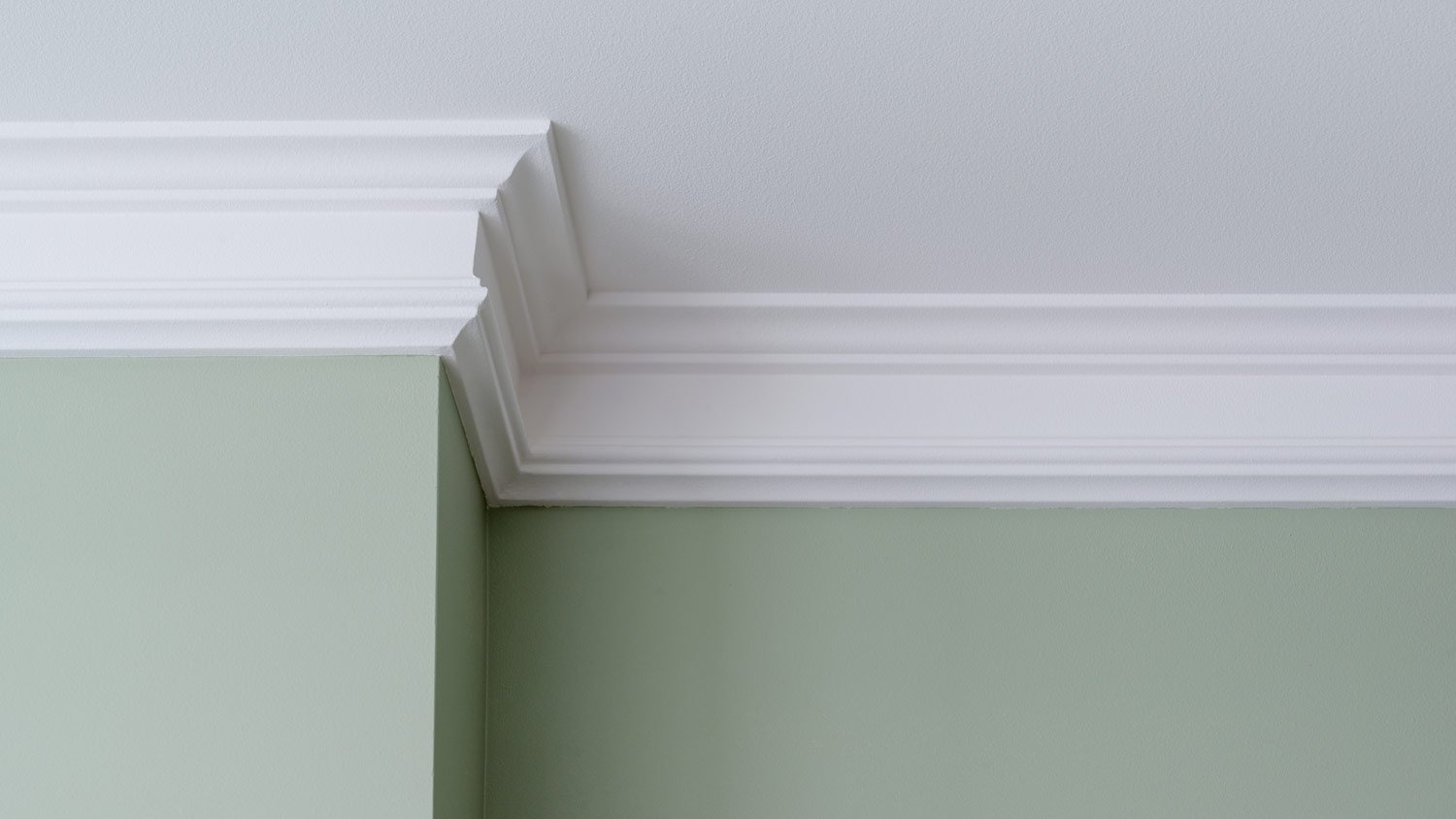
Installing foam crown molding is a cost-effective way to elevate your home. Costs can be kept low by matching molding to existing wall colors and doing some DIY work.
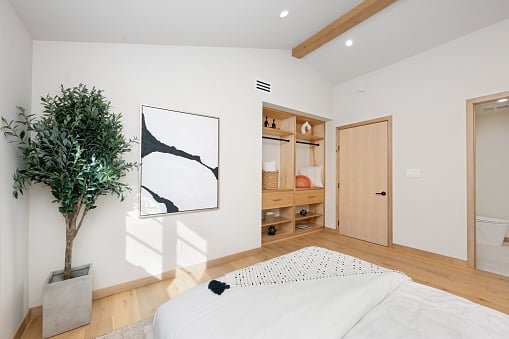
Learn how to measure baseboard trim of any style or size to help speed up installation, save on materials costs, and look amazing anywhere in your home.
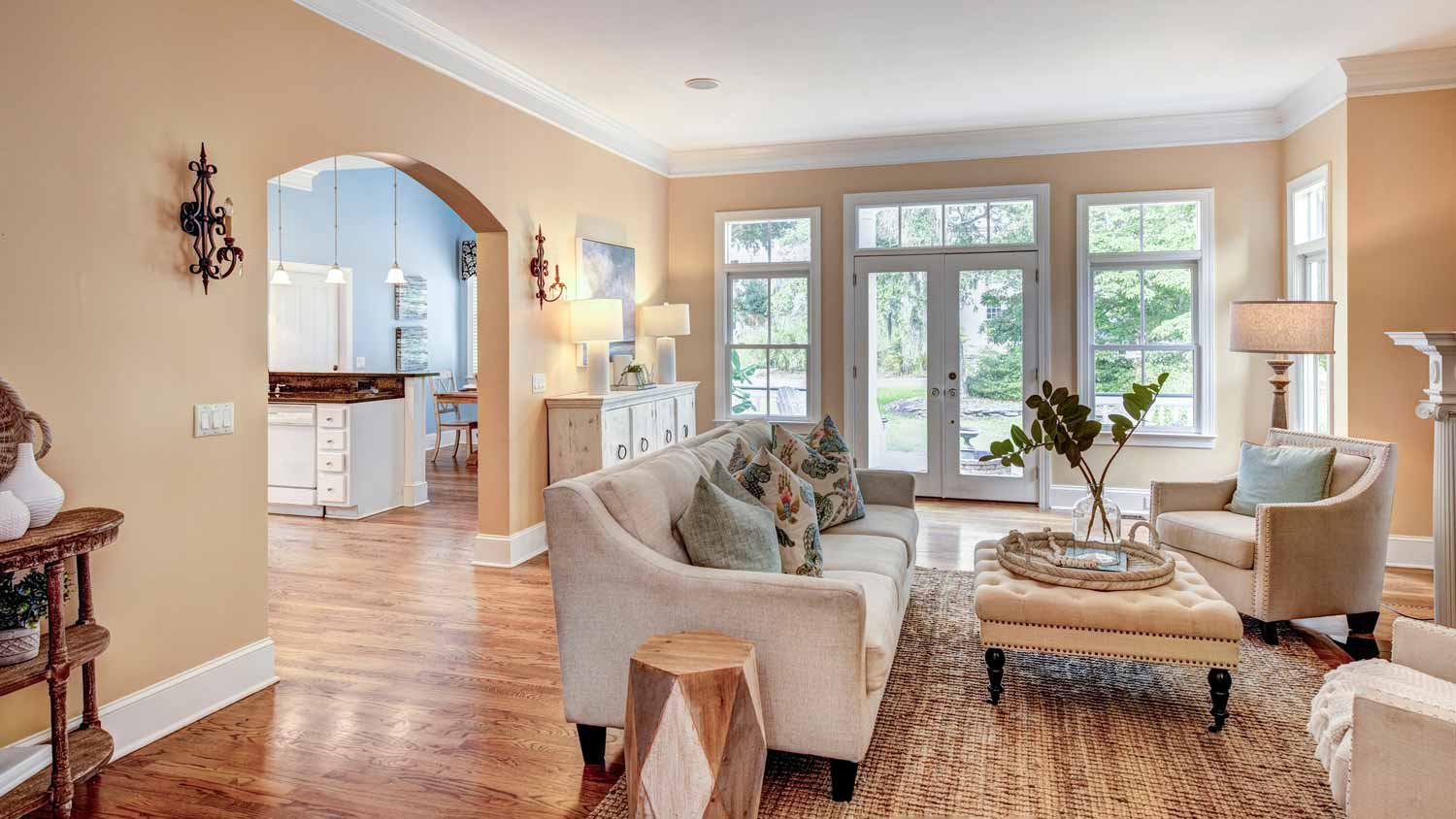
Need crown molding installed? Learn who to hire, what it costs, and why a trim or finish carpenter is the best choice for a polished, professional look.